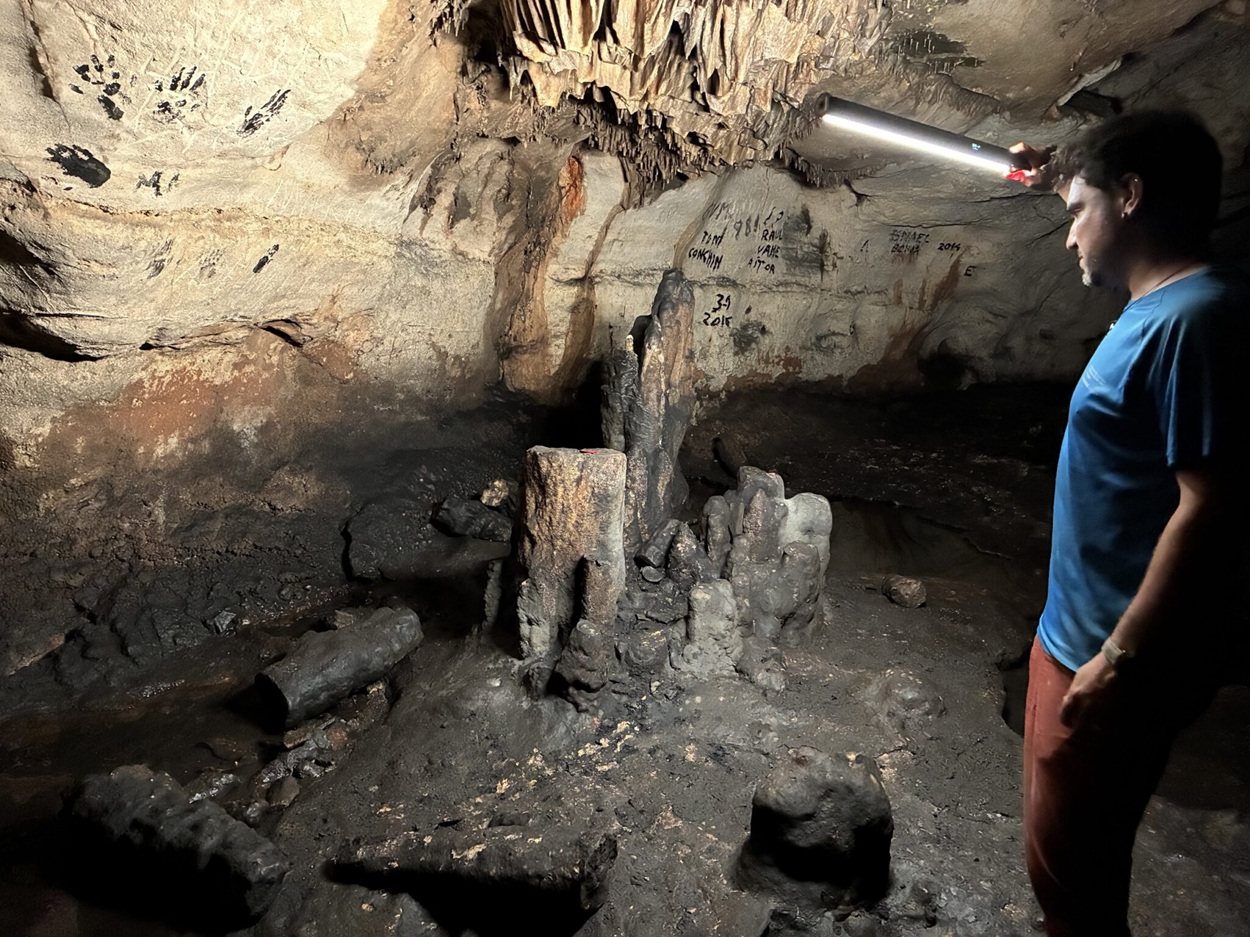Archaeologists from the University of Alicante and the University of Zaragoza have discovered over 100 prehistoric structures within the Cova Dones cave system in Valencia, Span.
The cave was first discovered in 1821, when an earthquake exposed the entrance that leads into a single-gallery cave approximately 500 metres deep.
Cova Dones contains one of the largest collections of Palaeolithic rock art along the eastern Mediterranean coast of the Iberian Peninsula, featuring over 100 paintings and engravings dating back approximately 24,000 years. These include at least 19 zoomorphic representations of animals, such as horses, hinds (female red deer), aurochs, and stags.
In a recent study, archaeologists have identified over 100 speleofacts structures – prehistoric stalagmite formations that have been modified or moved by human activity. They are formed by intentional breaking, moving, or reassembling of stalagmites into other types of structured formations.
Many researchers suggest that speleofacts may have served a ritual or symbolic purpose, potentially linked to early spirituality, cosmology, or social customs. Alternative theories propose that they functioned as territorial markers within the caves, were relocated to facilitate transit, or served practical roles, such as acting as barriers or windbreaks.
“The presence of calcitic regrowth’s on some fractures allows us to attribute, at least partially, these interventions to prehistoric periods, a circumstance that will be confirmed by a multidisciplinary study currently underway,” said a spokesperson from the University of Alicante.
Another well-known example of speleofact formations is found in Bruniquel Cave, France, where Neanderthals arranged broken stalagmites into circular structures approximately 175,000 years ago.
Archaeologists from UA and Unizar note that upcoming research will combine geomorphological studies, archaeological investigations, and extensive dating efforts to better understand when these structures were created and how extensively they were used.Header Image Credit : University of Alicante
Sources : University of Alicante





